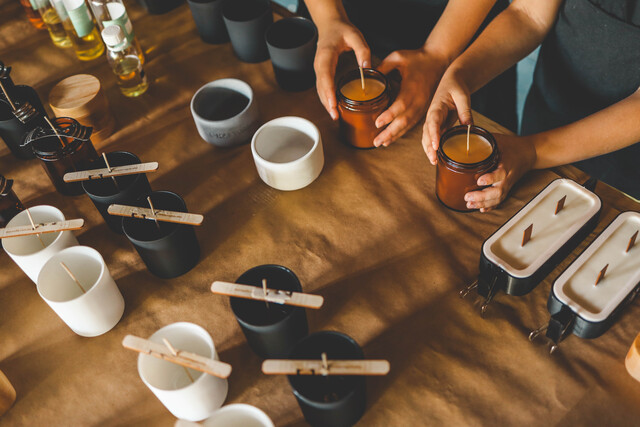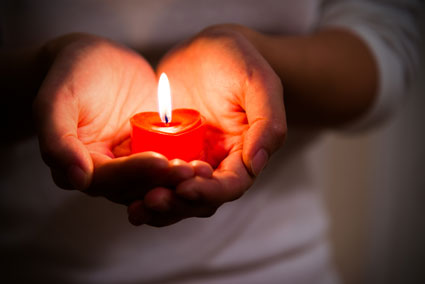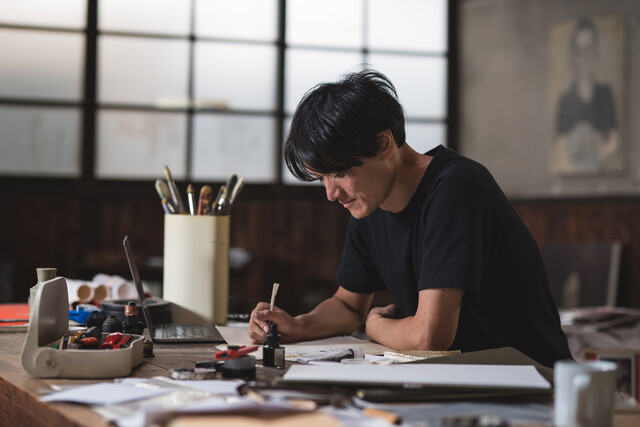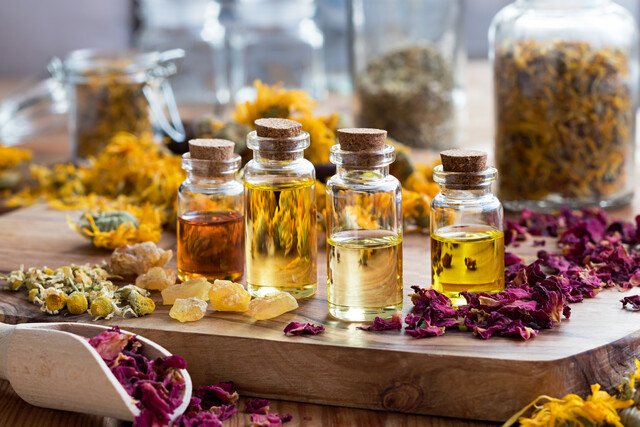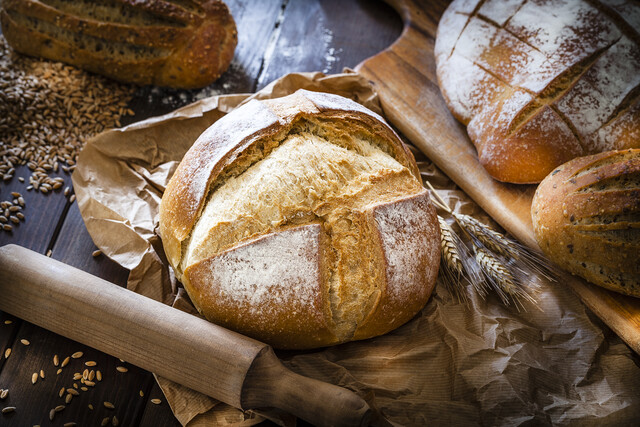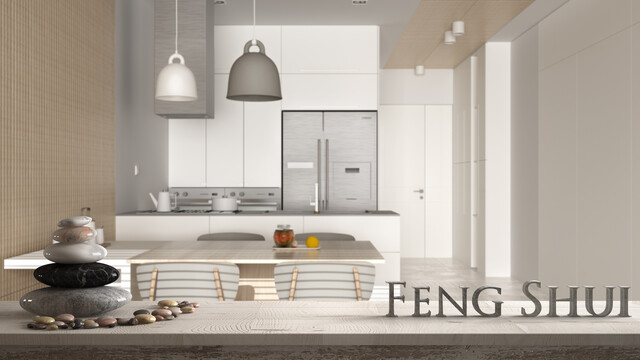Spring. The snow is melting or gone, the earth is warming, and you can smell it in the air. The world is awakening and all the plants of the earth are coming back to life. Does it make you want to get into your yard and start turning over dirt?
The idea of gardening for some folks jumps into their heads at the very first sign of spring, when all of the nurseries and home improvement stores get their first delivery of flowers and vegetables. It could be the smell of the warm, wet earth that calls you outside. Anyone who has gardened knows this feeling. It is true spring fever. Then there are those of you who would like to garden, think it is wonderful to see all the flowers and plants, admire the yards of your friends and neighbors, but just do not know how to take that first step.
For those who have not had much experience with gardening, we will need to define what a plant is and how it grows. To be a successful gardener, this is vital information.
The Seed.
A plant's life cycle nearly always begins with a seed. Seeds range in size from almost invisible ash-like seeds to a huge avocado pit. The seed holds all the genetic information and nutrition for the plant to get its start. When the conditions of soil, water, and sun or warmth are just right, a seed begins to germinate; beginning its lifecycle. Some seeds have other germination requirements, but for the purpose of this class we will deal with the majority of seeds and their needs.
The germination process splits the coating of the seed and from inside emerges a tiny sprout called a hypocotyls , and at the end of the sprout are two seed leaves called dicotyledons or "dicots." These seed leaves break the surface of the soil and are usually distinctive in appearance, and an experienced gardener can weed a garden just based on the two seed leaves, a much easier job than waiting for the plant to mature. Some plants such as corn and grass have a single cotyledon called a monocotyledon and are called "monocots." Most seed packets have the seed leaves pictured on the back for easy identification. Always keep those seed packets and you will be on your way to becoming a master gardener.
The Roots.
As soon as the seed germinates and the hypocotyl moves toward the surface of the soil, the first root is working its way through the soil away from the surface. As the root grows it sends out very tiny hair-like rootlets that are responsible for uptake of food and water to nourish the new plant.
Without water, the plant will die.
As the plant grows and matures, the roots take on a different appearance, and some plants have roots that diversify into different functional areas. Some of the roots continue to work to feed the plant food and water, other parts of the root system actually store food, and the entire root system functions as an anchor, holding the plant securely in the ground. Remember that the smallest hair-like roots are the ones actually responsible for the uptake of water. If the roots are exposed to sunlight even for a few minutes and the hair-like roots die, the plant will die. Transplanting must be done very quickly. It takes very little time for these roots to die off. If some of them die off, the plant will wilt after being transplanted, and will remain in a wilted condition until new tiny rootlets form to carry out the adequate uptake of water for the plant.
The Stem.
Without going into too much botany, the purpose of the stem of the plant is to carry food and water up to all portions of the plant that is above ground. Growth buds on the stem eventually become leaves or stems depending on the plant. The other purpose for the stems is to support the plant, since the stem is sturdy. This is most obvious in trees and shrubs, but even tall plants have sturdier stems than ones that grow closer to the ground.
The Leaves.
This is where the powerhouse production of food is carried out in most plants in a process called photosynthesis . The green material in the leaves is called chlorophyll and when exposed to energy from the sun, water from the soil, and carbon dioxide from the air, it creates carbohydrates and oxygen. The carbohydrates are used as energy by the plant. The oxygen is what is given off and we can use it to breathe.
Without plants, the supply of oxygen diminishes. If you had no intention to plant anything before, perhaps knowing that you are creating pure clean oxygen will inspire you to become a gardener.
Flowers and Fruit.
Most garden plants create flowers that are pollinated and create seeds for future plants or to be eaten directly. Not all flowers are the beautiful showy kinds that populate a flower garden. Nearly all vegetable plants have flowers, but many of them are small and almost unnoticeable. After the flowers on a vegetable plant are pollinated, they begin to produce a "fruit" that contains more seeds within that fruit. Consider a cucumber or a pepper. Inside the flesh of these vegetables are hundreds of seeds, some that we eat, and some that we discard. If these "fruits" are left to drop on the ground they very likely will produce new plants in the next growing season.
Many gardeners will pick off flowers after they have enough that have blossomed, especially in crops like strawberries and pumpkins. The more flowers there are, the smaller the resulting fruits will be. For those who are interested in growing nice big produce, it is a good idea to pinch off some of the flowers. The reason for this is that most of the energy of the plant is put toward fruit production, and ultimately seed production, ensuring the propagation of the plant. By limiting the number of flowers, more energy can be directed then, to the few select fruits or toward the growth of the plant if size is of consideration.
Plants for Beauty.
Annuals.
Every spring the home improvement stores and nurseries are full of beautiful blooming flowers of all colors, shapes, and sizes. The vast majority of these flowers are called annuals . A plant that falls under this category is a plant that will live for one season, or for no more than one year. There are those annuals that will self-seed and come back in different places in your garden or yard year after year, but generally speaking the annual plant gives color and scent to your garden for one year and will not return the following spring.
Perennials.
A plant that comes back bigger and better year after year is called a perennial . Most perennials start out small, with a little bit of foliage, usually few or no flowers the first year. The second year they appear to have grown a little bit, but are still relatively small and not very showy It is on their third birthday that the perennial truly comes into its own. The plant is now well established in your garden or yard and with proper care (fertilizer, for instance), water and appropriate sunlight, will return year after year for a dazzling show of color, and scent.
Vegetables, fruit, and herbs.
Gardens can be planted for the beautiful scents and showy splashes of color that brighten up the landscape around your home. They can also be planted with the intention of eating the plants and the fruits that they bear. The vegetable garden is the most commonly planted garden in the United States, and likely the very best thing that you can do for your own health. Eating produce from your garden just steps from your kitchen door gives you the benefit of the greatest amount and highest quality of vitamins and minerals stored in the vegetables. Herb gardens, too, are for consumption. Once you have an herb garden started you will be well on your way to using fresh and dried herbs in your daily cooking routine. You can also create herbal teas and even some herbal remedies once you have researched the various herb plants and what they can do for you.
Plants for Height and Borders.
Trees, Shrubs, and Vines.
The traditional American garden is based on the "victory" garden idea, established during World War II when every American family was to have a vegetable garden in their yard to provide food for themselves. That kind of a garden was a big, ungainly affair, usually tucked back by the neighbor's fence. As a result, such a garden is overlooked and forgotten for days, even weeks at a time. Before deciding where the garden should be placed, there are a number of questions to answer first.
Are you a novice or beginning gardener?
Do you wish to plant flowers?
Do you wish to plant vegetables?
Do you wish to plant herbs?
How much time to you have to devote weekly to your garden?
For beginning gardeners, a smaller garden is recommended. A smaller garden is easier to plan, takes less time to tend, and costs less to establish. The final advantage to starting small is that once you have a small garden started and it is thriving, it is then easy enough to start a second or a third garden.
Let us begin with the expectation of planting a small garden, no more than 16 to 20 square feet. This can be a rectangular patch eight to ten feet long and two feet wide, or four feet wide by four to five feet deep. This size of garden is easy to plan, establish, plant, manage, and enjoy. It will not cost an excessive amount of money and it will not produce more than you need or can eat.
With a general size in mind, you will need to evaluate your yard to determine the very best site for your garden. Plants all have sun and water requirements. The sun is a vital part of the plant's growth cycle.
Sun Requirements.
All plants have sun requirements. You will hear the terms, "full sun", "partial sun", and "shady location." Those terms are easily broken down into the number of direct sun hours that those plants need.
- Most vegetables and many flowers and herbs require full sun, which is about eight to twelve hours of sun a day.
- Partial sun plant requirements mean that the plant needs four to eight hours a day.
- Shade loving plants only require two to four hours of sun per day.
Zone Requirements. The next requirement to consider prior to selecting your plants is determining where in the country you live, and what is the planting zone.
Zone charts can be difficult to understand until you realize that they merely indicate the maximum and minimum temperatures that are experienced in all parts of the country. The USDA Zone Map (U.S. Department of Agriculture) is especially good for gardeners in the eastern and central portions of the United States, and they are divided into 11 separate zones, each distinctive in that there is a ten degree (10�) temperature difference between each adjacent zone.
Western Gardeners take Note.
The zones that are listed on the USDA map are not very accurate for the gardeners in the American West. The varying conditions ranging from ocean influence, to high mountainous regions, to desert conditions account for this difference. Those of you who are gardening in the Western United States should purchase a book entitled The Western Garden Book, published by Sunset Magazine, which has a totally different zone map that is specific to each state in the western United States.
If you are unable to find this book, be sure to visit your local nursery and ask for a gardening guide for your area. This is a good idea for everyone who is just starting into their gardening adventure. Find a good book on gardening in your area.
Putting a Zone Map to Good Use.
Once you determine where you live and what the hardiness rating your plants require (determined by the zone map) you will be ready to start selecting plants for your garden.
Another way to pick plants that will grow well in your garden is to make friends with your neighbor who gardens. Whatever grows in his or her garden will likely grow in your garden as well. In addition, if their gardens are well established, they will be delighted in your gardening interest and likely offer you plants from the ones that they need to divide, or allow you to harvest seeds for your own garden. By establishing a relationship with a neighborhood gardener, you will be fostering an invaluable resource who can answer many of your gardening questions.
Shade, Root, and Water Interference.
Because most plants require a certain amount of sun, you need to evaluate your yard and see where you already have trees and shrubs that cast a certain amount of shade in their shadows throughout the day. If you are not certain how much sunlight a certain area is getting, you need to mark the area, time it through the course of a single sunny day to see just how much sun that specific area gets. If you wish to plant vegetables and flowers that have a high sun requirement make absolutely certain that they will get that much sun.
Also notice whether you have very old trees that have roots running along the surface of the ground. These roots are going to give you trouble when you plant a garden. The existing roots will interfere with the root development of your new plants and likely will take most of the water because they are already large and highly developed roots. Avoid areas like this whenever possible. Alternatively, consider a different method of planting, creating a raised bed.
Lastly, keep an eye out for areas where water seems to collect and stand for long periods of time. This is a danger sign, as standing water will drown most plants and cause their roots to rot. Again, this area is to be avoided for your garden.
Purpose of Your Garden.
One of the last items to consider when planning your garden is its purpose.
|
� Why do you want a garden? � What will it be used for? Food? Flowers? � Do you plan to use your garden as an outdoor focus for entertaining? � Will your garden be your sanctuary or retreat? |
By asking yourself these questions you will have a much better idea of where to start planning your garden. If you intend for your garden to be a flower garden for you and your friends and family to enjoy, it will likely be placed near an entrance to your home. That way, every time you leave your home or come home your garden is right there waiting to greet you.
On the other hand, if you intend your garden to be a sanctuary or retreat, then itspositioning will need special consideration. It will need to be situated in a more out of the way place, perhaps around the corner of the house, and not underneath a bathroom or bedroom window. Such a Secret Garden will take a number of seasons to be established, but you must have your vision before you ever break ground, otherwise you will be spending a lot of time moving plants year after year because you did not plan well.







